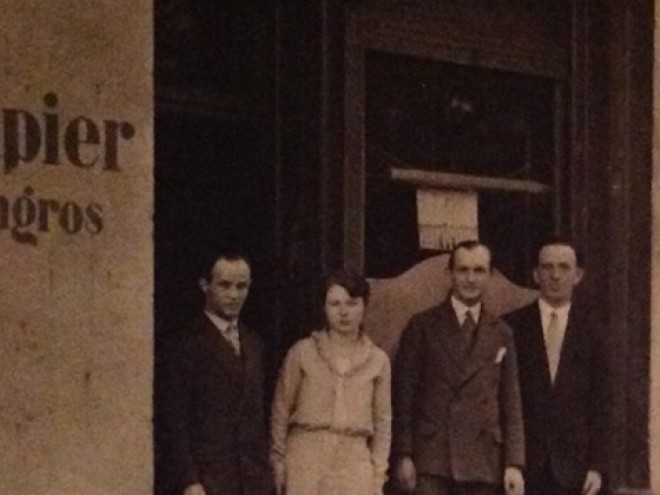“Shop till you drop” appeared to be the byword of German culture in the 1880s and thereafter, as department stores blossomed into major forces in the German “consumer revolution.” In his fascinating book The Consuming Temple: Jews, Department Stores, and the Consumer Revolution in Germany, 1880 – 1940, Paul Lerner explicates the role Jews played in the shopping frenzy that developed and how the so-called “Jewishness” of the German consumer revolution was used as the foundation for anti-Semitic propaganda and actions.
Department stores were unlike any other type of store, reports Lerner. Le Bon Marche᷄ in Paris, considered the first department store, began as a drapery store in 1852. Its owners proceeded to add on other “departments” until by 1887 it took up an entire city block and had some 1,800 employees. By 1906 it had almost seven thousand workers. Patterned after Le Bon Marche, department stores opened next in Britain, then the United States, and finally in Germany in the 1880s. What made department stores unique were their enticing displays of abundant products, architectural innovations, and prodigious scale. They were the epitomes of the new modernity in their scientific management style. They were huge, rationalized, and centralized. Often department stores were colossal in size and elegance. But they had their critics who the stores as crass capitalist interlopers forcing out small shopkeepers and changing traditional life.
In Germany, Jews owned or at least instituted the overwhelming majority of department stores as well as clothing and fashion houses throughout the country. Shopping in a department store often meant buying from Jewish-owned stores. In popular culture and in the daily press, the world of retail became a kind of “cultural code for Jewishness, reinforced by names, accents and exaggerated physique and body language.” Fiction and nonfiction of the period depicted department stores as having the “power to unleash women’s allegedly insatiable desire for goods. Germans came to see the department store as “Jewish temples where commodities were worshipped as was crass capitalism and profit-mongering.” This anti-Semitic imagery became much more evident after World War I with the rise of the Nazis. The Nazis promised and indeed succeeded to destroy the Weimar Republic’s flourishing consumer industries and the influence of Jewish and American influences. The industries were replaced with their own racially-exclusive forms of consumer culture.
The Consuming Temple is fascinating. It weaves together the analytical tools of history, cultural analysis, and business models to examine the “figure of the ‘the Jew’” in the consumer culture of Germany and the Nazis. It draws upon popular cultural objects such as magazines, theater, and erudite scholarly sources on the history of the period to flesh out Jewish economic history and illustrate how the notion of the “Jewishness” of an industry or object develops. It is a brilliant study in the history of ideas and a wonderful book to read.
Related Content:
- Ned Baeumann: Werner Sombart: Portrait of an Anti-Semite
- The Thoughtful Dresser: The Art of Adornment, the Pleasures of Shopping, and Why Clothes Matter by Linda Grant
- Michèle Fitoussi: On Writing a Biography of Helena Rubinstein





